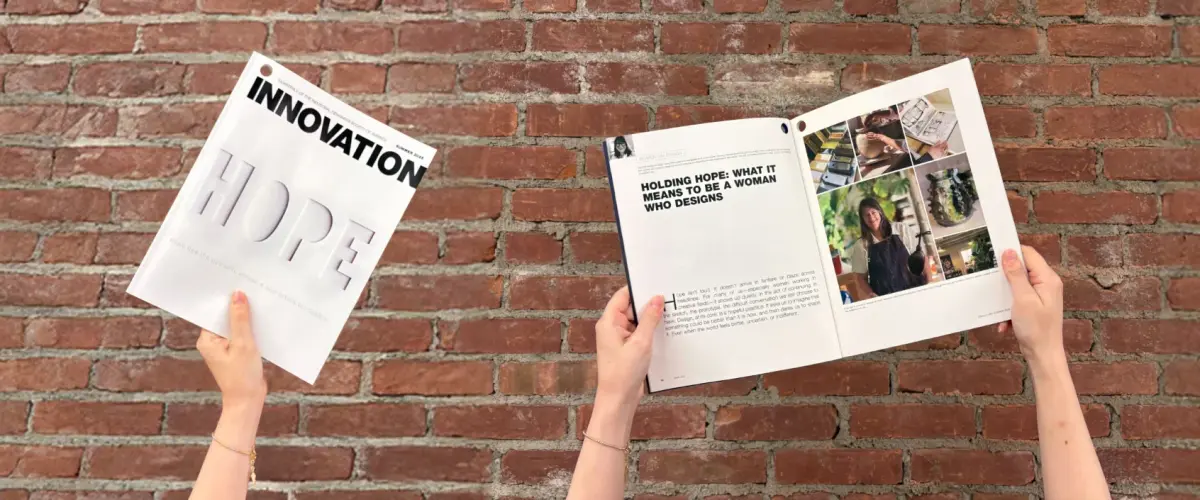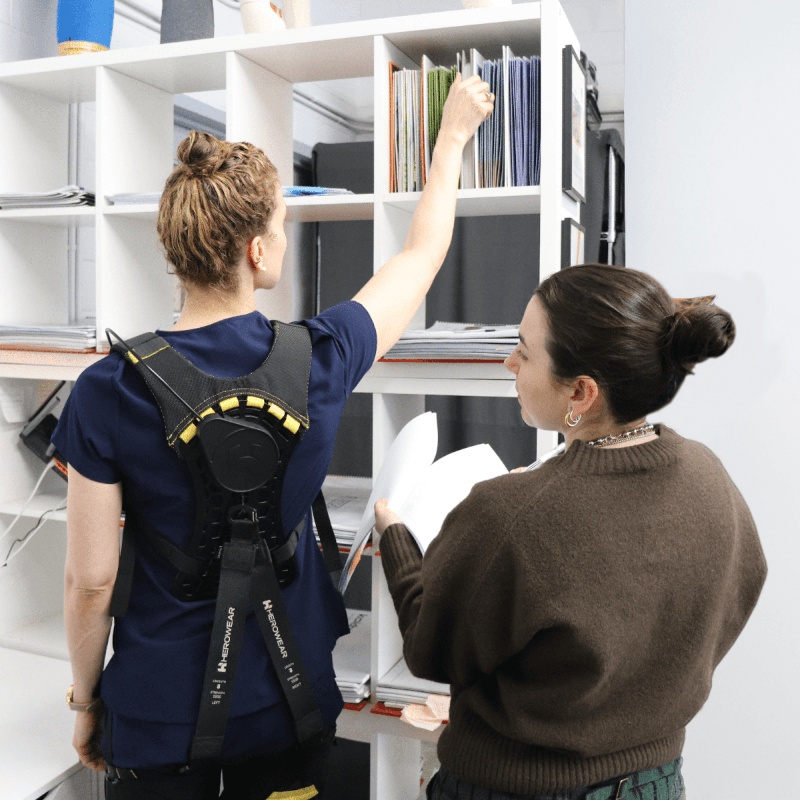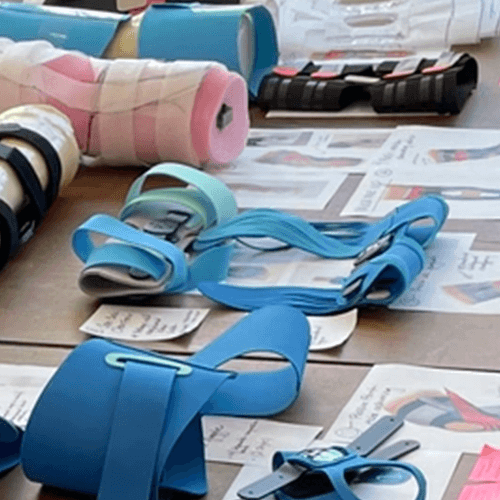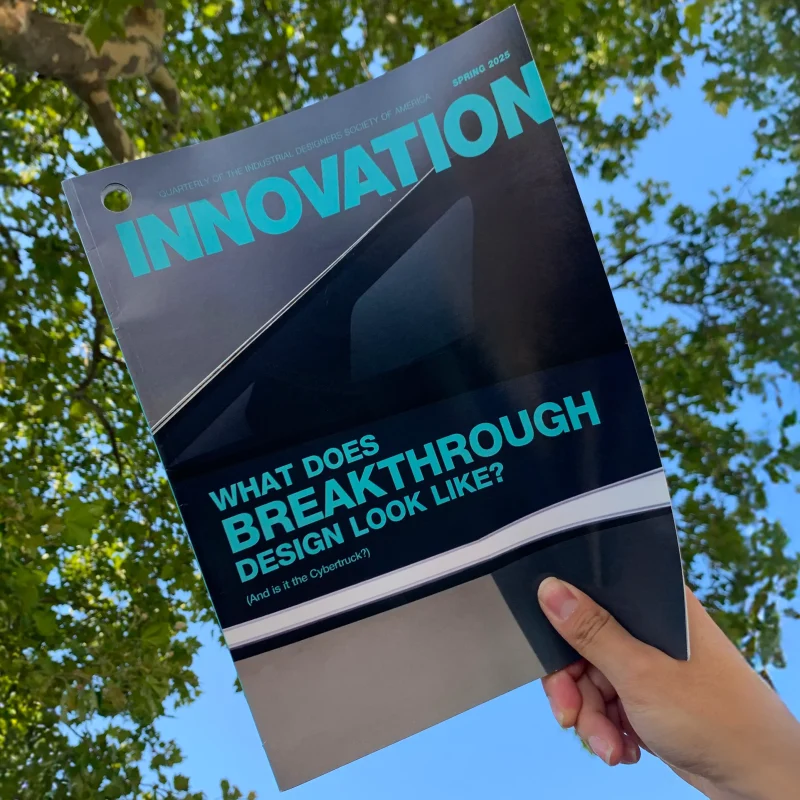
Holding Hope: What It Means to Be a Woman Who Designs
This article, written by Rebeccah Pailes-Friedman, was published in the Spring 2025 Issue of IDSA’s INNOVATION Magazine.
Hope isn’t loud. It doesn’t arrive in fanfare or blaze across headlines. For many of us—especially women working in creative fields—it shows up quietly, in the act of continuing. In the sketch, the prototype, the difficult conversation we still choose to have. Design, at its core, is a hopeful practice: it asks us to imagine that something could be better than it is now, and then dares us to shape it. Even when the world feels brittle, uncertain, or indifferent.
As a woman navigating both industry and academia, I’ve come to see hope not as optimism, but as resistance. It’s the decision to keep building—companies, objects, classrooms, futures—in spite of all that tells us not to. And I see this resilience everywhere: in the students who arrive carrying questions no syllabus can answer; in the design teams holding the line for inclusive products; in the small, quiet breakthroughs that happen late at night at the sewing machine or CAD screen.
This kind of hope is rarely celebrated, because it’s not shiny. It doesn’t make headlines. It shows up in the tenacity to make good work even when timelines are tight, budgets are limited, or recognition is slow to come. It’s especially present in the work of women designers, who often take on the invisible emotional labor of collaboration, mentoring, and bridging hard conversations. In our Women in Design conversations over the past few years, I’ve been struck by how often words like perseverance, balance, care, and community come up—none of which scream “disruption,” but all of which embody a more durable kind of design leadership.
When we talked about networking and resilience, we weren’t talking about ladder-climbing. We were talking about survival. About holding space for one another while navigating a field that’s not always structured with us in mind. About reaching out across disciplines and generations. That too is a hopeful act: to believe that connection and mentorship matter, and to keep showing up for each other, even when it’s hard.
I think often about the women I’ve spoken to through this column—their stories, their honesty, their strength. One shared how she stayed in the field because another woman made space for her. Another talked about choosing projects not based on prestige, but on the opportunity to make change. These aren’t always the loudest decisions, but they are the ones that shape the culture of design from the inside out. These women weren’t talking about hope in abstract terms. They were living it, designing it into being.
And let’s be honest: it has been hard. Between global instability, climate disasters, the rollback of rights, economic pressure, and the constant background hum of burnout, it can feel countercultural to keep imagining better futures. But design is inherently future-facing. Whether we’re creating a medical wearable, a system of support for a patient, or a vessel for shared meaning—we’re always in conversation with tomorrow.
Sometimes, that conversation is technical. Sometimes, it’s philosophical. And sometimes, it’s deeply personal.
For me, that dialogue often happens through clay.
In my studio, I make large ceramic vessels—coiled by hand, textured with slips and oxides, and fired until the surfaces crack and reveal layers of transformation. These pieces aren’t about beauty or perfection. They’re my response to climate grief, especially the long, slow disasters like drought and erosion. They’re how I process the overwhelming scale of what’s happening in the world—by shaping it, literally, into something I can hold.
There’s nothing passive about that process. Clay resists. It collapses. The kiln introduces chaos. And yet, I return to it because it grounds me. My ceramics practice is not separate from my design work—it’s the well I draw from. It reminds me that making is a form of meaning-making. That even in the face of loss or uncertainty, our hands can still create.
In earlier writing, I described creativity as a natural pathway—one shaped by instinct, iteration, and trust. When I’m working in clay, I feel that path most clearly. It’s intuitive. It’s physical. I’m not designing for a user or testing for scale. I’m listening. I’m responding. I’m giving form to emotion, tension, hope, and frustration—all of it. My recent work deals with drought because it’s something I can’t stop thinking about. The ground drying up. The surface cracking. The idea of something vital disappearing. Through my vessels, I can process those fears in a way that feels active, not paralyzing.
When I coil the clay, there’s a rhythm. When I fire it, there’s surrender. When the piece comes out—changed, scorched, scarred—it holds a narrative that didn’t exist before. And often, I didn’t know what it would say until I saw it finished. That, to me, is hope in physical form. Not a glossy outcome, but a mark of having passed through something difficult and come out the other side, altered but intact.
And that’s the part I’ve come to understand as hope.
Not the idea that everything will be okay—but the decision to make something anyway. To participate. To stay in the conversation.
I see this same spirit in so many women designers I know. Whether they’re working on equitable tech, gender-responsive products, or advocacy within institutions, they’re not waiting for perfect conditions. They’re doing the work. They’re shaping the conversation. The Women in Design Committee has shown me again and again that progress often looks like this: a little bit of clarity, a lot of persistence, and a shared belief that things can move forward—even if just a few degrees at a time.
There is also something profoundly hopeful in the way women often approach complexity—not by simplifying it or pushing it aside, but by holding it. Balancing competing priorities. Making room for ambiguity. Designing solutions that don’t ignore context but embrace it. Whether that’s a product that adapts to changing bodies, a workspace that accommodates caregiving, or a platform that centers underrepresented voices, women designers are constantly expanding the definition of what design can be—and who it’s for.
And isn’t that the most hopeful thing of all? That we keep showing up?
Hope isn’t naïve. It’s not passive. It’s built from hours, from iterations, from the small courageous decisions we make in the face of constraint. It’s built from care and curiosity and showing up again, even when we’re tired. Especially then.
I don’t always know if what I make will work. In ceramics, pieces crack. Kilns fail. In design, prototypes don’t always land. Budgets get cut. Teams shift. But I keep making. We keep making. Because through that act, we’re building not just products—but possibility.
And that’s what I want to leave you with. Not the kind of hope that demands a silver lining or a five-point plan. But the kind that lives in your hands. The kind you carry quietly into the studio, or the meeting, or the classroom. The kind that grows through practice. Through presence.
Through making.
—Rebeccah Pailes-Friedman, FIDSA
rpf@getinterwoven.com









